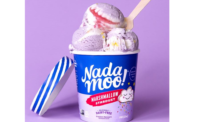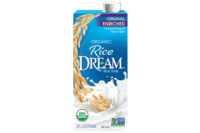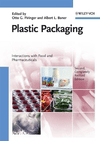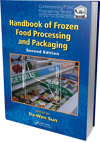Non-traditional packaging excels in beverage, dairy and food

Beloved for their light weight, eco-friendly profile and shelf-safe convenience, aseptic cartons, first developed for shelf-safe dairy products in 1961, have dominated store shelves in much of Europe, Asia and Central and South Americas for nearly half a century. Yet U.S. producers and consumers have been catching on to their many benefits in just the past two decades, in great part because the U.S.’s extensive milk refrigeration system didn’t offer a natural home for aseptic cartons.
But much has changed in the past 15 years, with growing segments of the dairy, beverage and food industries embracing carton technology so enthusiastically that it now dominates certain categories. In particular, producers of natural and premium beverages such as coconut water, value-added dairy products and, in the food category, broths and soup, have gravitated to the packaging for four principal advantages:
- Aseptic processing enables product innovation through a gentler process, offering superior flavor preservation and protection of nutrients and sensitive ingredients–without preservatives, which is crucial for the growing natural and good-for-you foods market.
- Cartons, which come in myriad shapes and a broad range of sizes, boast fully printable and consumer-facing surfaces akin to billboards, which offer brands the kind of shelf-popping differentiation that gets them noticed and bought.
- Cartons offer supply chain benefits to producers, enabling new channel penetration and consumer segmentation.
- As a paper-based package, cartons have a good environmental profile—an important factor for brands that want to communicate their sustainability commitments.
Proof of this newfound U.S. acceptance lies in the numbers. Between 2007 and 2013, Tetra Pak carton sales increased almost 42% domestically across food, beverage and dairy, as consumers reached out to a package long ago adopted by much of the rest of the planet for its practicality and eco-friendly characteristics. Thirty years after U.S. beverage manufacturers first embraced the Tetra Pak carton as a kid-friendly ‘juice box,’ it has finally begun to realize its full potential for countless applications in all market segments.
U.S. Milk Producers Are Adopting Shelf-safe Cartons
While about 65% of Tetra Pak cartons contain milk globally, versus 25% in the U.S., things are changing stateside. American producers, whose infrastructure included an extensive refrigeration supply chain, didn’t immediately see the benefits of shelf-safe milk. But today, as dairy processors innovate with more expensive products, including organics, flavored and nutraceutical milks—which have lower turns—a year-long shelf life is driving demand is for UHT. Increasingly, producers are seeing that just because they can refrigerate products from farm to table, that doesn’t always make the most economic or environmental sense.
Beverages In Cartons Appeal To Millennials
In the 1980s, children became the “first adopters” of cartons in the U.S. for an entirely different reason: The 200 ml Tetra Brik® Aseptic was a boon to their parents, who found that a straw poked into a carton is far less likely to become an inadvertent and unfortunate fountain in tiny hands. Now, with 1-liter and 1.5-liter sizes, juices and other thirst-quenching options in cartons are appealing to an entirely different demographic: the 60% of U.S. households consisting of 1-2 person(s) - mostly Millennials without kids and empty-nest Baby Boomers - who need a smaller package to meet their needs.
Cartons Lead To Broth And Soup Aisle Innovation
In many categories, producers have found that adopting a carton package not only helps grow market share—it also helps expand the market. That’s what happened when Campbell’s Swanson brand launched 32- and 48-ounce recloseable cartons–the first of many brands to either switch formats or create new broth lines. Where consumers used to poured unused canned broth down the drain, they could reseal and refrigerate the new package. The convenience led to new usage occasions, resulting in a volume increase of 22% and a sales increase of 14% from 2009-2012, according to IRi.
With growth has come segmentation. What had been a choice of beef, chicken and vegetable broth now includes seafood, lamb, mushroom and more. Today, the package boasts a 58% market share by volume, overtaking the broth category in unit sales in 2013 and is now the fastest-growing packaging format when broths and ready-to-serve soups are measured together. But most significantly, other producers are trying this can-to-carton route, with similar innovation stories underway. ConAgra Foods’ Hunt’s brand tomato sauce and strained and chopped tomatoes are available in recloseable cartons.
Natural Products And Coconut Water In Packaging
For the growing natural products category, cartons have been the obvious choice for brand owners for many reasons. The lightweight, recyclable paper-based package has a ‘green’ halo effect and can be stored and transported ambiently, thus shaving supply chain costs. Aseptically processed products are also shelf-safe without preservatives, a must for the healthy-foods market.
The earliest adopters in natural foods were dairy alternatives, such as soy milk and almond milk, a category cartons now dominate with more than 70% market share as of 2013. Because the package is opaque, protecting against light, and the packaging process is gentler than traditional pasteurization, freeing beverage brands in the natural foods space to innovate with ever more delicate and exotic ingredients. Açai, cactus, aloe, maple, birch, barley and coconut waters all have health properties and flavors better protected by cartons. And in the ever-expanding coconut water category, aseptic processing makes it possible to package the juice of young coconuts in far-flung places without worrying about maintaining a refrigerated supply chain. Cartons have come to dominate the category with 76% share in dollar sales of coconut water now packaged in cartons.
Future Roads
The path for the carton in the U.S. did not begin with ambient milk, as it did in most countries. But the package has found favor with food, beverage and dairy producers who are drawn to its eco-friendly properties and for the benefits it offers in differentiation, innovation and consumer lifestyle wants and needs. With such flexibility, producers and packagers will continue to innovate, extending cartons’ properties and scope to meet the wants and needs of producers and consumers alike.
 Suley Muratoglu, vice president, Marketing & Product Management, Tetra Pak Inc., U.S. & Canada, currently runs the company’s presence in core categories, including dairy, beverage and food. Further industry insights from him can be found at www.doingwhatsgood.us. Tetra Pak (tetrapakusa.com) is the world's leading food processing and packaging solutions company.
Suley Muratoglu, vice president, Marketing & Product Management, Tetra Pak Inc., U.S. & Canada, currently runs the company’s presence in core categories, including dairy, beverage and food. Further industry insights from him can be found at www.doingwhatsgood.us. Tetra Pak (tetrapakusa.com) is the world's leading food processing and packaging solutions company.
Looking for a reprint of this article?
From high-res PDFs to custom plaques, order your copy today!









